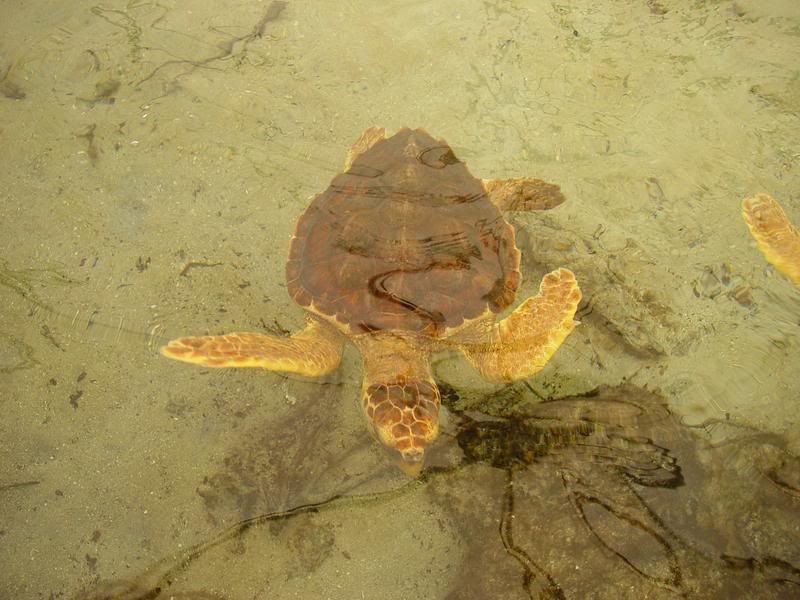In the far distance of history, in times long before remembrance, a hulking shape emerges from the sea. Under the bright moon, the dark form slowly struggles up the shore. Instinct takes it above the tide line; instinct tells it to dig - creating a cradle of earth to safely hold the children this creature cannot stay to warm and protect. After disguising its nest, the lumbering beast returns to the sea.
It's an evocative image, isn't it? Imagining it gives a sense of the primal, the ancient, and of the basic instinct of life that lies within us as it does with all living creatures.
The fascinating thing is that you might witness this glimpse of prehistory on any given night from March to September - sea turtle nesting season here on South Florida's beaches. I had the good fortune to experience it last night.
I was on the beach with my friend Staci from S.T.O.P. (Sea Turtle Oversight & Protection), watching nests that are expected to hatch within the next few days. S.T.O.P. volunteers monitor the nests so, in the event the hatchlings become disoriented by the lights from the nearby buildings, we can rescue them and take them to the sea.
Staci was headed down the sand a bit to check a second nest while I was staying with the first, watching for her to signal me to come if the second nest was hatching. I saw her stop to speak with a group of late-night revelers that were walking down the beach (presumably about their bright white flashlights - a no-no during nesting season), and when I looked just ahead of them, I saw a large, dark shape moving on the sand. A sea turtle mama was ready to make her nest.
Eventually, after some of the party-people wandered back the way they came, I went to take a closer look but still kept a respectful distance, so as not to spook her at such a delicate time. Even in the dark of night and from a distance, it's an amazing thing to see. The mother's return to the very beach where she was born, the great dragging effort to leave the sea... witnessing that evokes a feeling that I can't quite name, but it's something basic and earthy and reverent. It's something I hope that everyone can experience, but that won't happen unless we protect the threatened and endangered turtles that nest on our shores.
 |
| Juvenile loggerhead at Gumbo Limbo Nature Center |
If you live near nesting grounds or plan to visit them, please visit S.T.O.P.'s website to learn about sea turtles, their habitat, and what you can do to help protect them. And if you live in the South Florida area, why not think about volunteering your time to help the next generation of sea turtles make it to the sea? All you need is a bucket, a red-light flashlight, and the willingness to go enjoy the ocean breezes and the crashing of the surf for a few hours!


